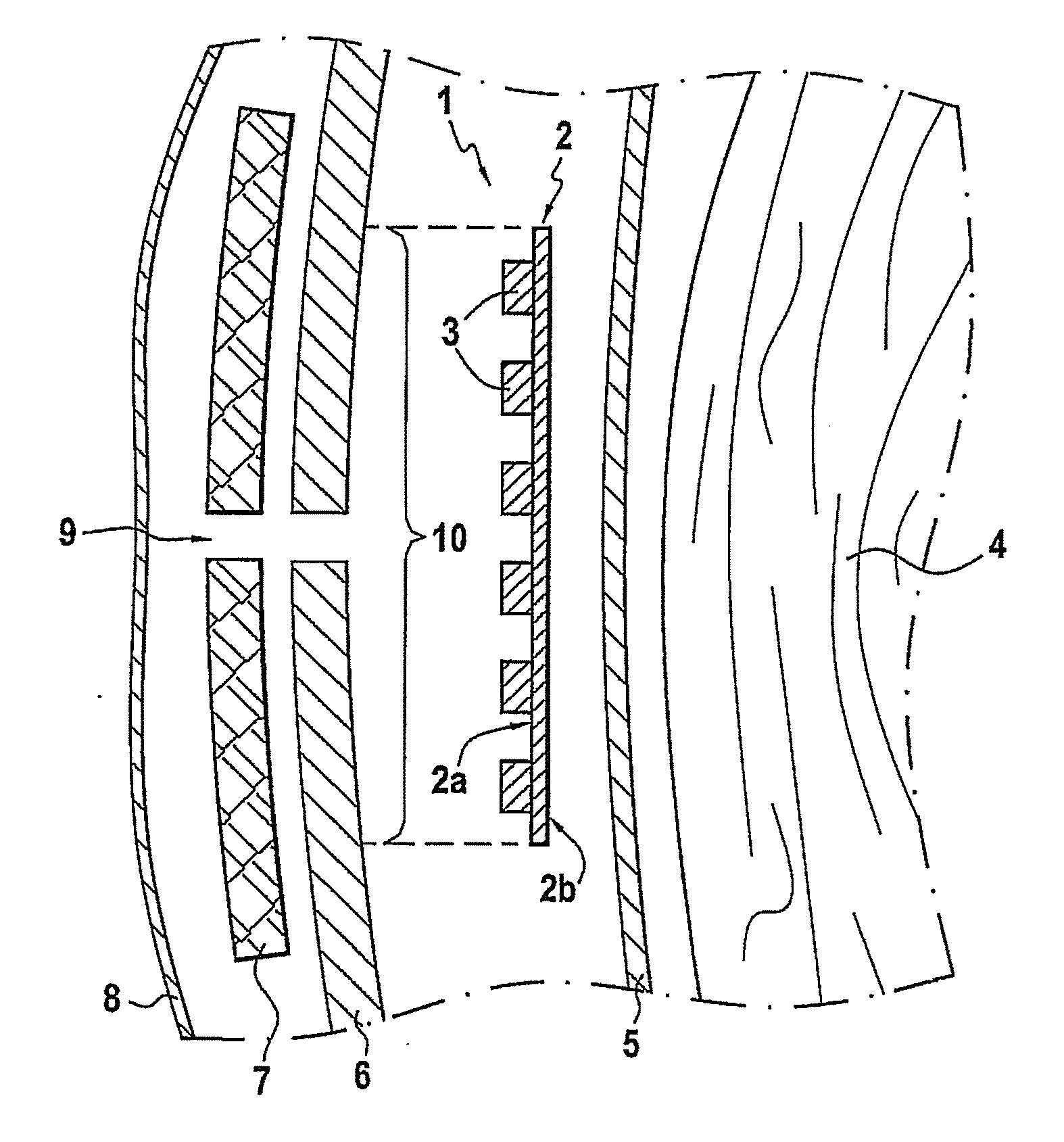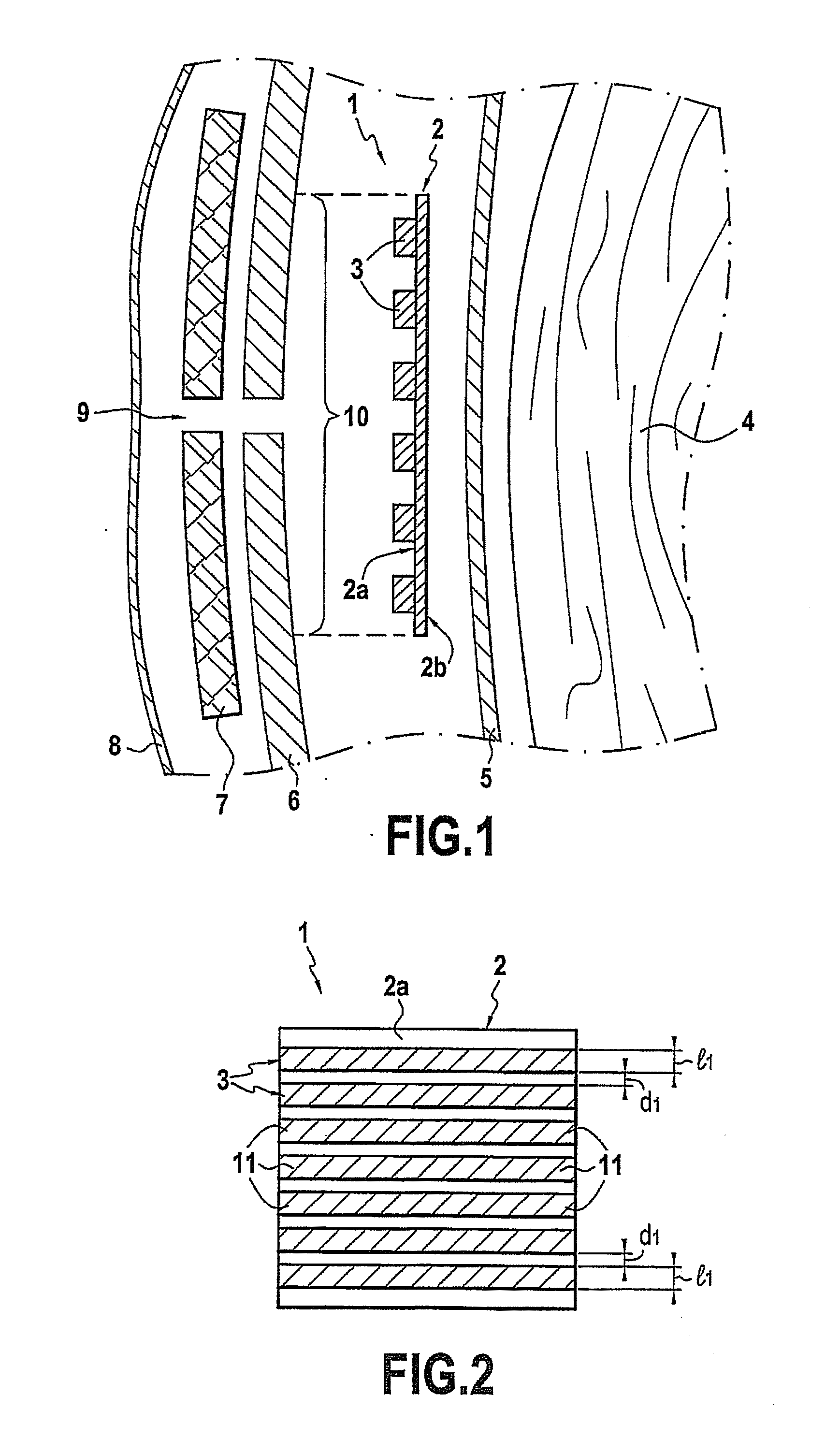Textile implant, in particular for repairing hernias
- Summary
- Abstract
- Description
- Claims
- Application Information
AI Technical Summary
Benefits of technology
Problems solved by technology
Method used
Image
Examples
Embodiment Construction
[0055]The textile implant 1 shown in FIGS. 1 and 2 comprises a textile piece 2 having a first face 2a and a second face 2b. The first face 2a is covered in part in a bio-adhesive composition 3 presenting an adhesive function that is activatable on coming into contact with the moist medium of tissues. The textile implant 1 is implanted in an intra-abdominal extra-peritoneal position, i.e. it is placed between the internal organs 4 and the peritoneum 5 on one side and the abdominal wall 6, a layer of adipose tissue 7, and the skin 8 on the other side.
[0056]In FIG. 1, the first face 2a of the textile implant 1 is placed facing the hernia orifice or eventration 9, closing the layer of adipose tissue 7 and the peritoneum 6, after the hernia has been dissected and pushed back (not shown). The bio-adhesive composition 3 is hydrosoluble and absorbable and preferably comprises a single bio-adhesive polymer that is hydrosoluble and absorbable with an adhesive function that is activatable on c...
PUM
| Property | Measurement | Unit |
|---|---|---|
| Percent by mass | aaaaa | aaaaa |
| Percent by mass | aaaaa | aaaaa |
| Length | aaaaa | aaaaa |
Abstract
Description
Claims
Application Information
 Login to View More
Login to View More - R&D
- Intellectual Property
- Life Sciences
- Materials
- Tech Scout
- Unparalleled Data Quality
- Higher Quality Content
- 60% Fewer Hallucinations
Browse by: Latest US Patents, China's latest patents, Technical Efficacy Thesaurus, Application Domain, Technology Topic, Popular Technical Reports.
© 2025 PatSnap. All rights reserved.Legal|Privacy policy|Modern Slavery Act Transparency Statement|Sitemap|About US| Contact US: help@patsnap.com



